WARBIRDS RESOURCE GROUP > VIETNAM > STRATOFORTRESS > PREVIOUS PAGE
Variants
| Model: | Produced | Entered Service |
| XB-52 | 2 (1 redesignated YB-52) | prototypes |
| B-52A | 3 | |
| NB-52A | 1 Modified B-52A | |
| B-52B | 50 | 29 June 1955 |
| RB-52B | 27 Modified B-52Bs | |
| NB-52B | 1 Modified B-52B | |
| B-52C | 35 | June 1956 |
| B-52D | 170 | December 1956 |
| B-52E | 100 | December 1957 |
| B-52F | 89 | June 1958 |
| B-52G | 193 | 13 February 1959 |
| B-52H | 102 | 9 May 1961 |
| Grand total | 744 production |
XB-52/YB-52 - First two prototypes, fitted with B-47 type bubble canopies, not used in production versions.
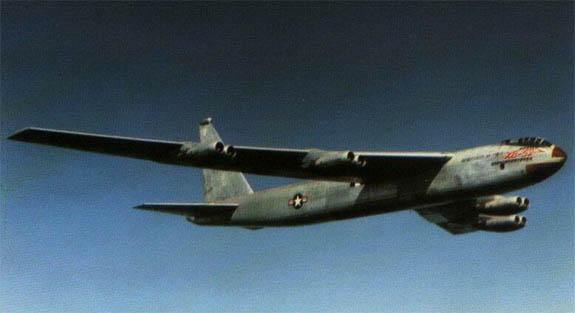
XB-52 prototype. (U.S. Air Force Photo)
NB-52A - The last B-52A (serial 52-0003) was modified and redesignated NB-52A in 1959 to carry the North American X-15. A pylon was fitted under the right wing between the fuselage and the inboard engines with a 6 feet x 8 feet (1.8 m x 2.4 m) section removed from the right wing flap to fit the X-15 tail. Liquid oxygen tanks were installed in the bomb bays to refuel the X-15 before launch. First flight with X-15 was on 10 March 1959, and NB-52A carried the X-15 on 59 of the program's 199 flights.
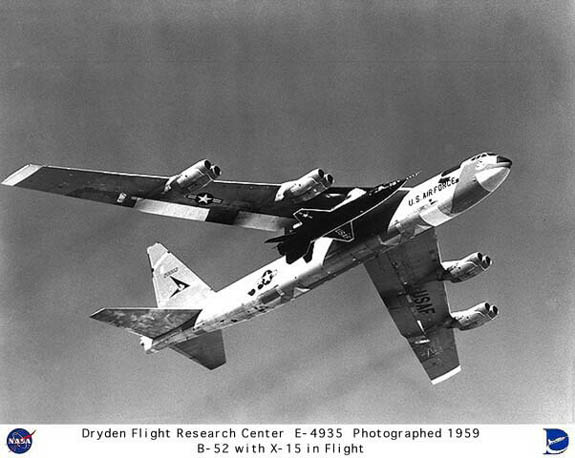
NB-52A Stratofortress/52-0003. (NASA Photo)
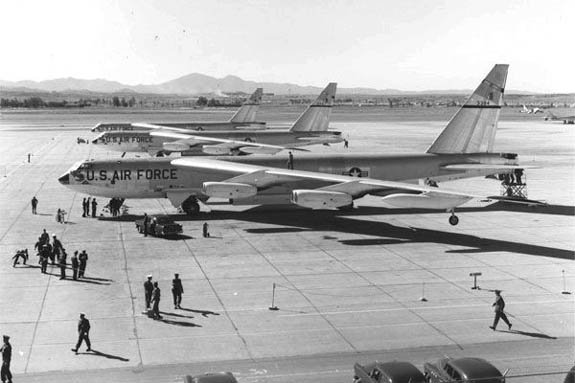
Three B-52Bs of the 93rd Bomb Wing prepare to depart Castle Air Force Base, California, for their record-setting round-the-world flight in 1957 (U.S. Air Force Photo)
Seven B-52Bs were brought to B-52C standard under Project Sunflower.
NB-52B - The NB-52B was B-52B number 52-0008 converted to an X-15 launch platform. It subsequently flew as the "Balls 8" in support of NASA research until 17 December 2004, making it the oldest flying B-52B. It was replaced by a modified B-52H.
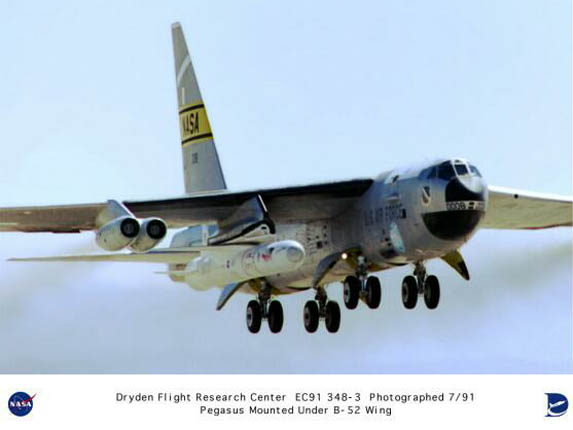
NB-52B Stratofortress/52-0008. (NASA Photo)
RB-52C - The RB-52C was the designation given, but seldom used, to B-52Cs converted for reconnaissance duties in a similar manner to RB-52Bs.
B-52D - The B-52D was a dedicated long-range bomber without a reconnaissance option. The Big Belly modifications allowed the B-52D to carry heavy loads of conventional bombs for carpet bombing over Vietnam. Aircraft assigned to Vietnam were painted camouflage with black bellies to defeat searchlights.
B-52E - In the B-52E the aircraft had an updated avionics and bombing navigational system, which was eventually debugged and included on following models.
One E aircraft (number 56-0631) modified as a testbed for various B-52 systems. Redesignated NB-52E, the aircraft was fitted with canards and a Load Alleviation and Mode Stabilization system (LAMS) which reduced airframe fatigue from wind gusts during low level flight. In one test, the aircraft flew 10 knots (11.5 mph, 18.5 km/h) faster than the never exceed speed without damage because the canards eliminated 30% of vertical and 50% of horizontal vibrations caused by wind gusts.
B-52F - In the B-52F, the aircraft was given J57-P-43W engines with a larger capacity water injection system and new alternators. The aircraft had a problem with fuel leaks, which were eventually solved by service modifications Blue Band, Hard Shell, and QuickClip.
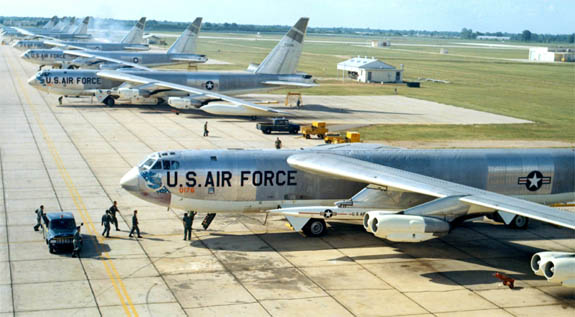
B-52F Stratofortress. (U.S. Air Force Photo)
B-52H - The B-52H had the same crew and structural changes as the B-52G. The most significant upgrade was the switch to TF33-P-3 turbofan engines which, despite the initial reliability problems (corrected by 1964 under the Hot Fan program), offered considerably better performance and fuel economy than the J57 turbojets. The ECM and avionics were updated, a new fire control system was fitted, and the rear defensive armament was changed from machine guns to a 20 mm M61 Vulcan cannon. A provision was made for four AGM-48 Skybolt ballistic missiles. First flight 10 July 1960, entered service 9 May 1961. This is the only variant still operational.
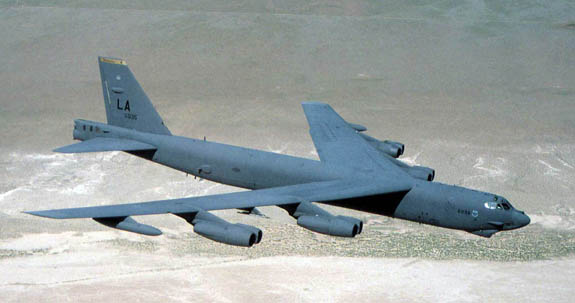
B-52H, 2nd Bomb Wing, Barksdale AFB, LA. (U.S. Air Force Photo)
Sources:
Wikipedia: B-52 Stratofortress
WARBIRDS RESOURCE GROUP > VIETNAM > STRATOFORTRESS > PREVIOUS PAGE
